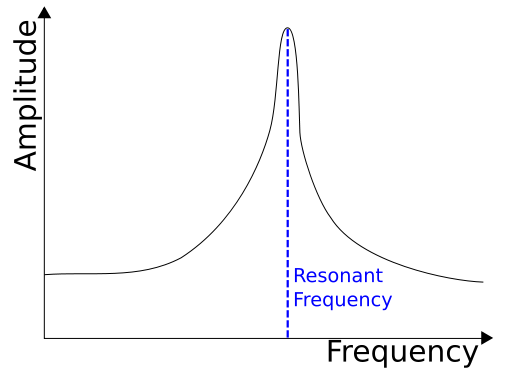 In the Simple harmonic motion topic we considered natural oscillations of pendula and masses on springs. But so far we have ignored the effect of the fluid in which the oscillations are taking place and therefore the effects of damping. And what if these oscillations are forced? Resonance may ensue!
In the Simple harmonic motion topic we considered natural oscillations of pendula and masses on springs. But so far we have ignored the effect of the fluid in which the oscillations are taking place and therefore the effects of damping. And what if these oscillations are forced? Resonance may ensue!
Key Concepts
Pendula and masses on springs oscillate at a natural frequency when released in the absence of a driving or damping force. This is determined using the equations for time period previously studied (Simple harmonic motion) and then finding the reciprocal:
\(T_m=2\pi \sqrt{m\over k}\)
- \(T\) is time period for a mass on a spring (s)
- \(m\) is mass (kg)
- \(k\) is spring constant (N m-1)
\(T_p=2\pi\sqrt{l\over g}\)
- \(T\) is time period for a pendulum (s)
- \(l\) is the length of the string
- \(g\) is gravitational field strength (N kg-1)
\(f={1\over T}\)
- \(f\) is frequency (Hz)
- \(T\) is time period (s)
Oscillations may be driven by a continuous force. Pushing a child on a swing is a close example, but not quite, as the pusher is not in constant contact with the swing. A better example is to hold the top of a spring on which a mass is hanging and to move your hand up and down.
The driving frequency has significant effects on the amplitude of the oscillations:
- For low frequency movements, the whole system of driver and oscillating body moves as one. The driver and the oscillating body are in phase. The amplitude of the oscillations is equal to that of the driver.
- As the driving frequency approaches the natural frequency, the amplitude rises to a maximum. The driver is one quarter of a cycle ahead of the oscillating body (phase difference of \(\pi\over 2\)).
- For high frequency movements, the driver and the oscillating body move in antiphase. The amplitude decreases with increased frequency to approach zero.

When the driver frequency matches the natural frequency of the oscillating body, it is at the resonant frequency. Resonance occurs.
How much of AHL Damped and driven oscillations have you understood?


 Twitter
Twitter  Facebook
Facebook  LinkedIn
LinkedIn